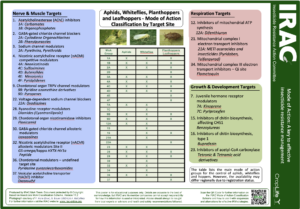Southeast Asian Thrip
Thrips parvispinusChilli (hot pepper) crop is mostly damaged by chilli thrips (Scirtothrips dorsalis Hood) and species such as Frankliniella occidentalis, Thrips tabaci and Frankliniella schultzii of which T. tabaci and F. schultzii are present worldwide in peppers predominantly. Adding to the list of damaging thrips is the tobacco thrips or invasive thrips or Southeast Asian thrips, Thrips parvispinus.
One of the first reports of T. parvispinus was by Waterhouse (1993) from Indonesia, Thailand, and Malaysia; later by Sartiami et. al. 2011. T. parvispinus became the dominant thrips species in Indonesia, replacing Thrips palmi in several vegetable fields (Murai et al. 2010). They found damage from these thrips occurred in several vegetable crops, such as chilli pepper, paprika, green bean, potato, strawberry and eggplant in Bali and Bogor in Indonesia. Over the past two decades this species has been reported from China (Mirab-Balou et al. 2011), Australia (Mound, Masumoto. 2005), India (Tyagi et al. 2015, Rachana et al. 2018), Tanzania, Uganda (Moritz et al. 2013), Ghana (Fening et al. 2022), Greece (Mound and Collins. 2000), France, Spain; The Netherlands (NPPO 2019) and USA (Soto-Adames. 2020).
The host range has been well documented and is reported to be feeding on more than 40 host plants that include Gardenia, roses, chilli pepper, fiber crops, legumes, and fruits (Ahmed et al. 2023, Rachana et al. 2022, Sartiami and Mound. 2013, Hutasoit et al. 2019). T. parvispinus belongs to “Thrips orientalis group” (Mound and Masumoto. 2005) and has been well described. The females are two-toned while the males are like chilli thrips and are much smaller in size (Ahmed et al. 2023). Both the sexes of this species are fully winged. Females are nearly 1 mm long, with brown head and prothorax, yellowish brown meso- and metathorax and black abdomen; forewings are dark with pale coloured base, seven-segmented antenna with segment III and basal half of IV, V in yellow colour. Males are 0.6 mm long and evenly yellow (Soto-Adames. 2020 and Hutasoit et al. 2017).
Under controlled study conditions on chilli pepper, Hutasoit et al. 2017 reported that the females live for nine days, the males live for six days and the total life cycle is completed in 13-14 days. Females lay 15 eggs on an average and eggs are inserted into leaves. Larvae (nymphs) molt twice in 4-5 days and there are two pupalstages lasting 2-3 days.T. parvispinus mainly colonize flowers and the underside of leaves while the larval growth mainly occurs on the underside of leaves. T. parvispinus males feed on the underside of the leaves causing deep punctures and scratches on leaves. At times, necrotic areas on the leaf lamina and yellow streaking are also observed. Adults (particularly females) have been observed to feed and hide in the nectariferous area of chilli flowers resulting in withering of flowers and a reduced fruit set. The feeding by larvae causes scarring and discolour on and in developing fruits. Yield losses can be severe for both peppers and eggplant. Though difficult to see in plants, thrips can be seen by shaking flowers and new foliage over a white sheet of paper.
